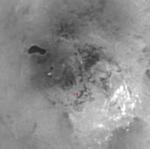Terms
Table of Contents
A
All Grain
AG or All Grain brewing involves extracting the sugars from the barley yourself as opposed to purchasing an extract kit or malt extract.
The grains are added with hot water to a mash tun where they are mashed. Mashing is the process of soaking the grains in water at specific temperatures to activate the enzymes within them. These enzymes convert the starch inside the grains into sugars.
Once the mash complete sparging begins. This process involves rinsing the grains and then draining the solution into the brewing kettle to boil. Often the resulting solution is recycled through the bed of grain in the mash tun to further filter it. This is accomplished by fitting a false-bottom to the mash tun before loading it allowing the draining of the solution from underneath the grain.
Now that the sugar has been extracted from the grain, the solution is boiled. At different times in the boil hops are added to give flavor, bitterness and aroma. The time the hops are added into the boil and the amount of time that the hops remain in the boil determines the type of character they add (ie flavor, bitterness or aroma).
When the boil is done, the solution is cooled using either an immersion chiller or a counter-flow chiller. When the correct temperature is achieved, the solution is transferred to a fermenter and the yeast is pitched.
Airlock
| An airlock allows the gas produced by the fermentation process to escape, but prevents any bacteria or debris from entering the fermenter. Usually employing water or sanitising solution as a barrier. | 
|
ABV
| We can determine a rough alcohol content using the OG and the FG. This is done by dividing the difference from OG to FG by 0.00738. The resulting number is the percentage Alcohol By Volume or ABV. | <math>\mbox{ABV}% = \frac{\mbox{OG} - \mbox{FG}}{0.00738}</math> |
B
Bottle Filler
| This device is fitted to the fermenters tap or to the end of a hose. When the nipple at the end of the stem is depressed it allows the beer to flow through. | 
|
C
Carboy
A glass carboy, usually 5 gallon or 23L, is a purpose made glass container for fermenting. Most carboys have parallel sides and a small neck at the top with a 30-50mm opening. A bung is fitted to this opening so an airlock or blowoff hose can be fitted. The advantage of the glass carboy is twofold. One, it doesn't scratch and is very easy to clean. Two, you can see what your brew is doing.
Calculate Volume in L
Square or Rectangle:
<math>Length(m) \times Width(m) \times Depth(m) \times 1000 = Volume (L)</math>
Cylinder:
<math>\pi\times\left(\frac{Dia(m)}{2}\right)^2\times Height(m) \times 1000 = Volume (L)</math>
Cone:
<math>\frac{\pi\times\left(\frac{Dia(m)}{2}\right)^2\times Height(m)}{3} \times 1000 = Volume (L)</math>
Sphere:
<math>\frac{4}{3}\times\pi\times\left(\frac{Dia(m)}{2}\right)^3\times 1000 = Volume (L)</math>
D
Dry Malt Extract
| Dry Malt Extract or DME. | 
|
Dextrose
| Type of sugar. More Later. | 
|
E
Extract Kit
| Beer Extract Kit in a Tin. It is basically a concentrated wort. Usually the moisture is removed from the wort using freeze-drying.
Often referred to as "Goo" | 
|
F
Fermenter
| A fermenter is a large container in which fermentation takes place ranging from plastic buckets to stainless steel vats. | 
|
Final Gravity
FG or Final Gravity is the specific gravity of the wort once the yeast is added and fermentation has finished.
G
Grommet
A grommet is fitted to the fermenter lid to form a seal between the lid and the bottom stem of the airlock.
H
Hops
Hops are female flower cones from the hop plant. They are used in beer to provide bitterness, flavor and aroma. The point at which the hops are added to the boil determines what characters they impart. When the hops are added at the begining of the boil, they mostly impart bitterness. When added around the middle of the boil the hops add mostly flavors. When added toward the end of the boil or after the boil (Dry Hopping) they mainly add aroma.
Hydrometer
I
Iodophor
| Iodophor is an Iodine based sanitiser that doesn't need to be rinsed off. It can be allowed to drip-dry. | 
|
Infusion Pack
| An infusion pack is a combination of hops and specialty malts created by home brew shops.
They are used to add characters to your kit beer to make it similar to a commercial beer or beer style. | 
|
J
K
Krausen
Krausen is the term to describe the layer of foam that rises to the top of the wort while fermentation is actively taking place.
L
M
N
O
Original Gravity
OG or Original Gravity is the specific gravity of the wort before the yeast is added to the solution.
P
Q
R
S
Specific Gravity
| Specific Gravity is the ratio of the density of a liquid or solution compared to the density water. | <math>\ Specific\ Gravity = \frac{Solution\ Density}{Water\ Density}</math> |
Stopper
A rubber stopper with a hole to form a seal between the fermenter lid and the bottom stem of the Airlock.
T
Tap
Trub
Trub is the sediment in the bottom of the fermenter that has settled out of the beer once the bulk of the fermentation has taken place.














